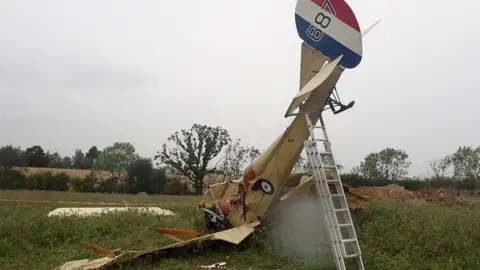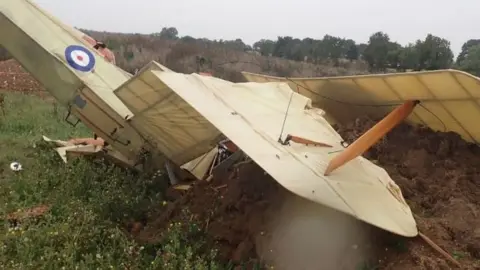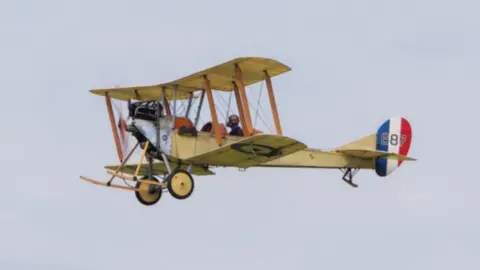Sywell World War One replica plane crash pilot might have stalled
 AAIB
AAIBA pilot seriously injured when his replica vintage World War One biplane crashed might have "inadvertently stalled the aircraft", a report said.
The Royal Aircraft Factory BE2c crashed at Sywell Aerodrome in Northamptonshire on 2 September.
The plane was taking part in a practice display sequence with five other aircraft at the time.
It "entered a spin" at 500ft (152m) and crashed "nose-down", the Air Accidents Investigation Branch (AAIB) said.
The 57-year-old pilot suffered a fractured vertebra, broken ribs, severe face lacerations, a broken wrist and a broken thumb.
He was flying the aircraft from the rear cockpit, which prevented further injuries as the front cockpit was "severely damaged".
"The rear cockpit instrument panel broke away from its mounting and was found in the front cockpit," the report said.
"Had the front seat been occupied, it could have struck the front passenger and caused significant injuries."
 AAIB
AAIBThe pilot was wearing a Kevlar flying helmet at the time "to look more authentic" and the report said it was "likely this prevented him from suffering further serious injuries".
The plane was also severely damaged including the fuselage, front cockpit, and the rear cockpit instrument panel. The fuel tank was crushed and punctured, causing the fuel to leak out, but there was no fire.
 AAIB
AAIBThe pilot made a right turn to get the aircraft in the correct position for the display, it then "descended in a steep nose-down altitude and continued to rotate the right", the report said.
The aircraft, built in 1969, then entered a spin or a spiral dive before crashing.
"It is possible that, whilst manoeuvring the aircraft slightly aggressively, the pilot inadvertently stalled the aircraft," the AAIB said.
The report added it was "also possible" the aircraft was affected by turbulence.

Find BBC News: East of England on Facebook, Instagram and Twitter. If you have a story suggestion email [email protected]
